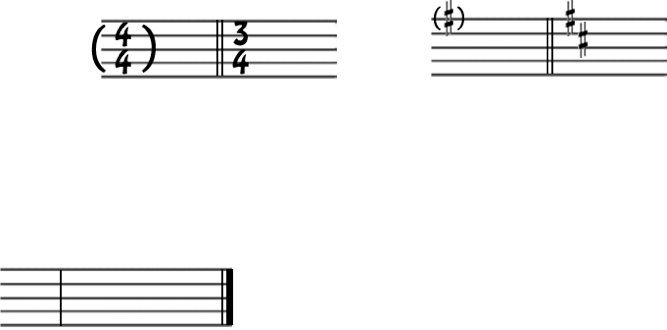Notation
Skills














If you’ve read the sections on Basics, Scales, Chords, and the previous articles in Notation Skills, then you’re already familiar with most of the staff and the symbols musicians can use to describe sound. The rest are listed in this and the following 3 articles; Articulation, Dynamics, and Ornaments.
REPEATS
There are many forms of repeat symbols. The simplest would be the SINGLE MEASURE REPEAT.
We can then have DOUBLE measure repeats.
If we want a whole section to repeat - whether it be 4 bars or 16 bars - we can use REPEAT BRACKETS.
We also have a way of indicating we only want a certain section repeated, using REPEAT ENDINGS.



We’re able to use the repeat brackets to repeat an isolated piece of a section;






These two sections are the exact same by sound, but the top example uses the repeat endings to condense the notation.
Da Capo
Dal Segno

Translates to “To the head.” Literally means go to the beginning. Will be abbreviated with “D.C.”, and then will have a “Al Coda” or “Al Fine” sign.












Abbreviated with “D.S.” D.S. Al Coda directs the player to go to the SEGNO symbol (Segno translates to “the sign”). The “Al Coda” tells the player to go to the Coda section after playing through the piece once (arriving at the Coda sign for the second time).
Dal Segno Al Fine





BAR/MEASURE LINES

Single barline
Double barline
Double heavy barline
Used for ending measures.
Used for ending sections of a piece.
Double barlines should be used in between changes of time signature AND key signature.
Used for ending entire songs, or movements.




